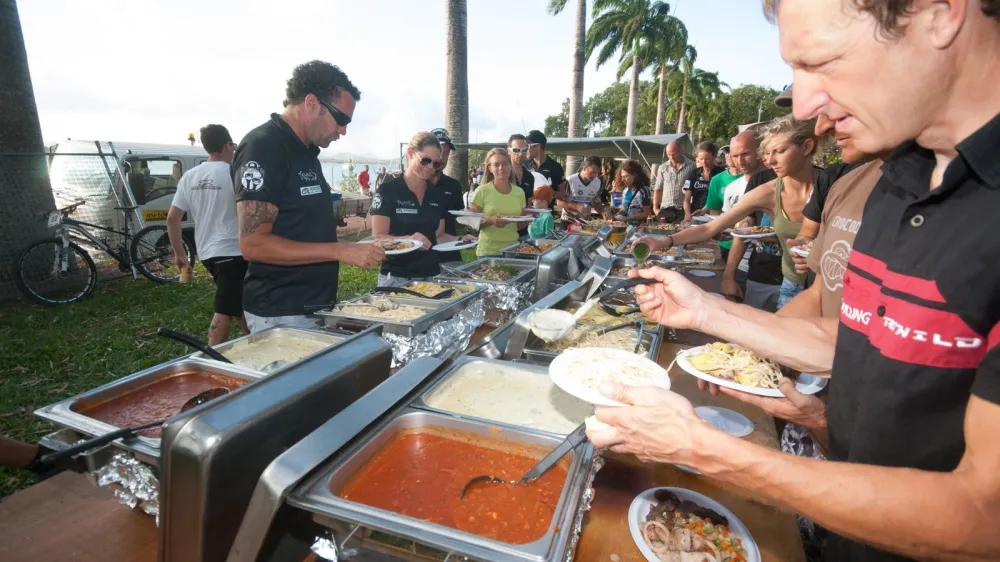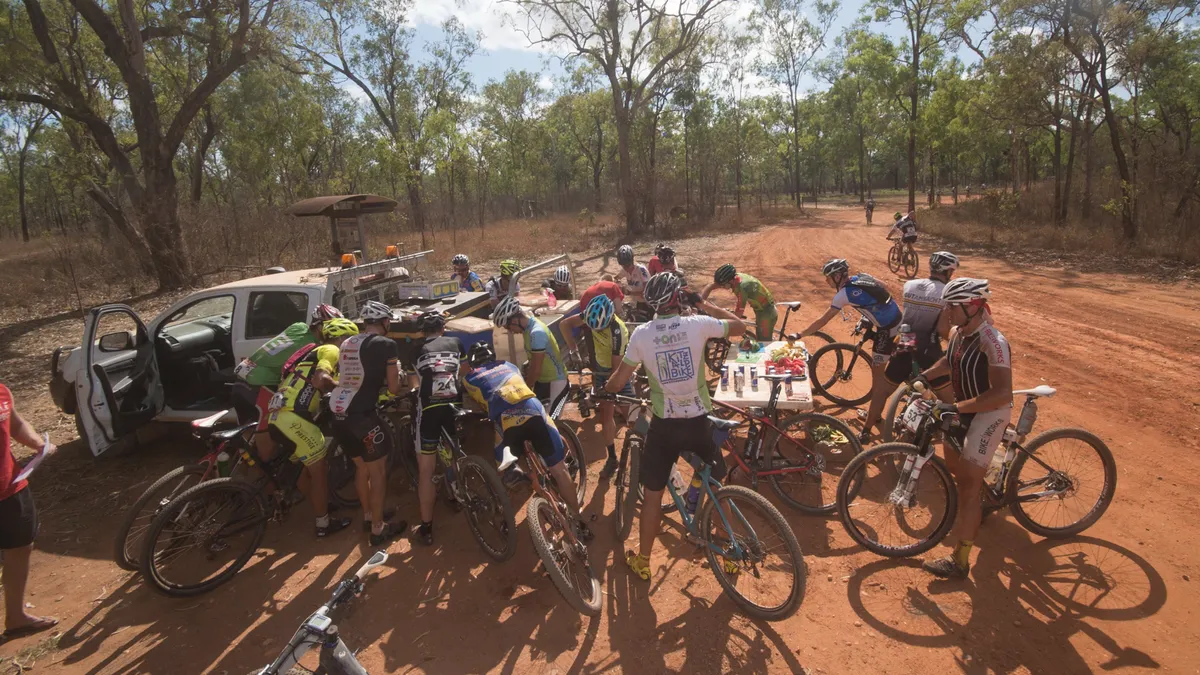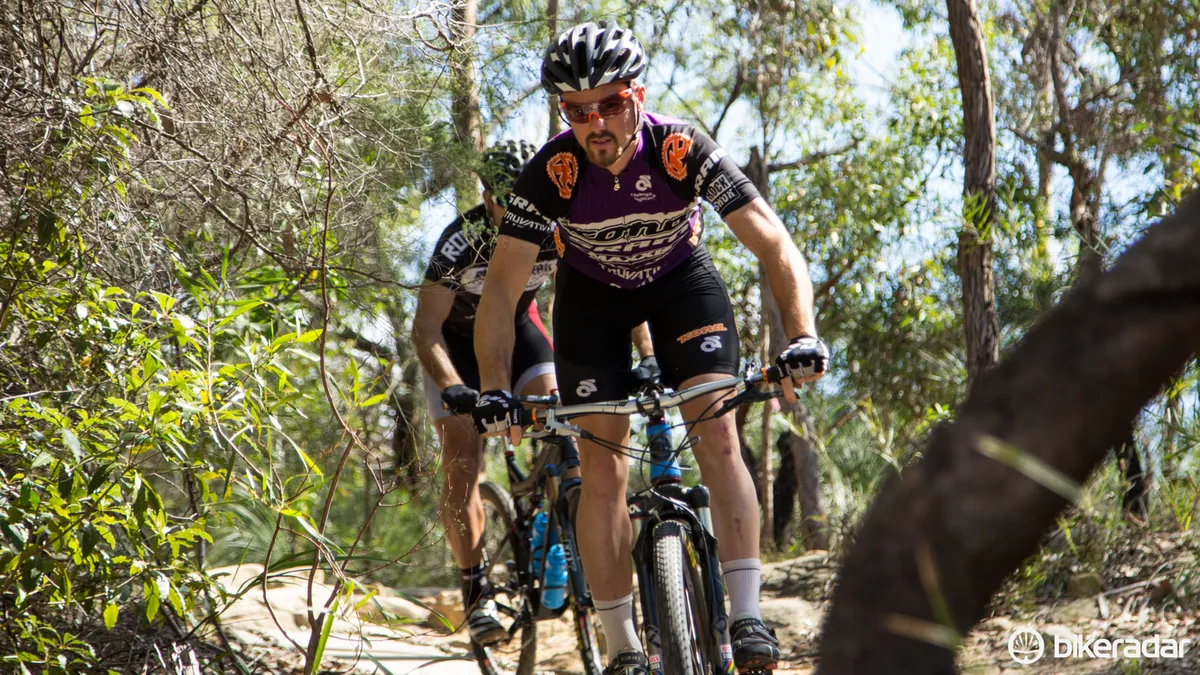As we discussed in our first article on multi-day mountain bike racing bike setup, it’s important to arrive prepared for such epic adventures. After all, you want enjoy yourself out there, rather than getting stuck in the wilderness having a miserable experience.
In this three-part series, we're speaking to the riders, mechanics and organisers of the iconic Crocodile Trophy, a mountain bike stage race held annually in far North Queensland, to gather some insight into what works – and what doesn’t – when it comes to bike setup, nutrition and general preparation. This second piece will cover some tips and tricks for when it comes to putting fuel into your body.
This is by no means a complete answer to the tricky questions of nutrition and hydration. But with a focus on some of the world’s hardest multi-day racing conditions, and insight from two top international riders, every cyclist should be able to benefit from the information below.
For 2014, the Crocodile Trophy gains UCI S1 classification and moves to a truer mountain biker’s course, with plenty of singletrack. Based on their harsh conditions, past events have been proving grounds for hydration and eating habits – the general feeling is that what works for the Crocodile Trophy should certainly suffice in less extreme environments.
Before the bike
BikeRadar chatted to Cory Wallace, a mountain bike marathon professional and nutrition consultant – and he told us it’s important to get your diet sorted a few weeks before the event. “I’ll try to thin down a bit – just eating healthy and riding heaps seems to do it for me," Wallace said. I try to eat as many vegetables as I can in the lead-up to the race [because] you don’t get these rich nutrients as often during the event.”
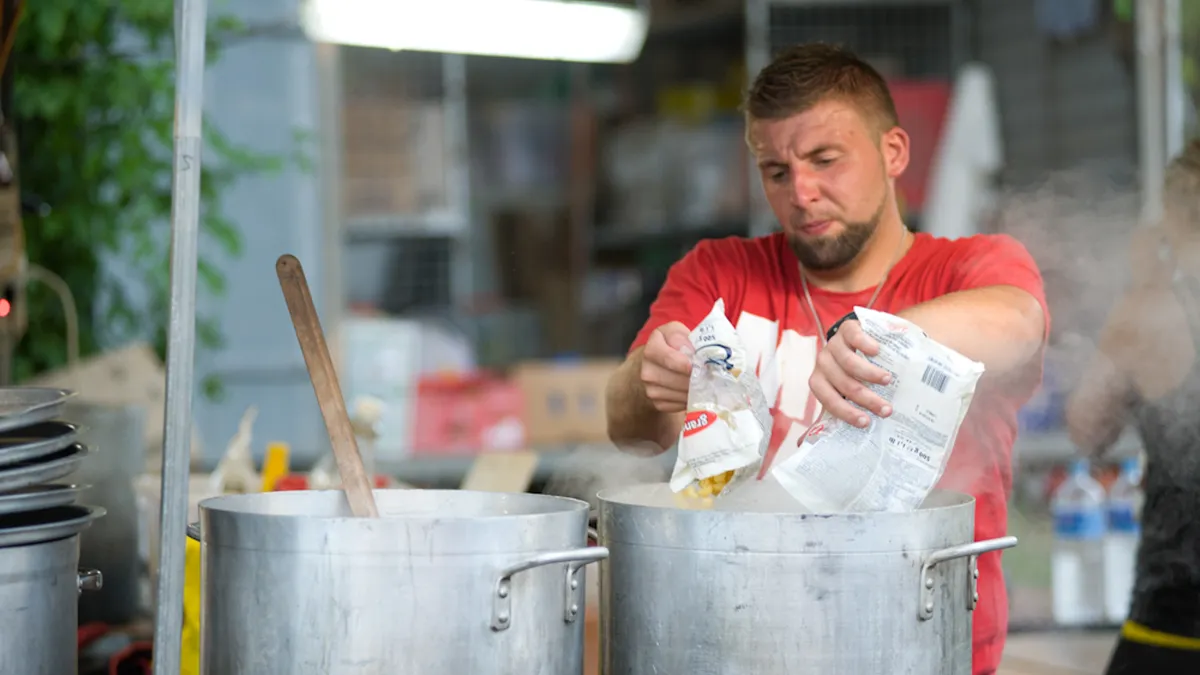
The events always have plenty of food, but it's a good idea to bring along some stuff you know and love too
“Show up with your comfort foods," Wallace continued. "These organised events sure feed you enough, but it’s nice to have the stuff you’re used to – and it will help keep you sane. Hemp seeds are one of my choices – they’re super high on protein and you’ll get, like, six hours of energy out of them.”
It’s often said that breakfast is the most important meal of the day, and it’s certainly the case before a long and arduous bike race. The problem is that many stage races have early morning starts to avoid extreme heat or running out of light, and that often presents problems for many who just don’t feel like eating or drinking at those early hours.
Wallace has seen many riders getting it wrong: “White toast isn’t enough – you need good fats and proteins to get you through the whole day,” he said.
However you decide to get that intake, ensure you can stomach it in training. This is an important tip and one that applies to everything you eat and drink while away racing – just make sure it works for you.
Along with food, hydration before the race is critical. “Just overdo it on the water, drink and drink until you hate the sight of water," Wallace went on. "You really have to force down your food and drink, you won’t feel like it at the starting hours, but you just have to.”
As a five-time 24-hour solo mountain bike world champion, Jason English knows how to fuel his body, something that's even less surprising considering his wife – Jen – happens to be a sports nutritionist.
English told us that on a 40ºC day at the 2012 Croc Trophy, he started the day by taking on 2l of milk, an electrolyte mix and a heap of cereal. English reiterated what Wallace had said to us – “you just have to drink and force it through”.
If you’re planning to use bottles and have them take to feed-zones, English suggests freezing them for hot days, so as to avoid them getting super hot from sitting in the sun by the time you get to them.
While on the bike
Once you’re on the bike, your goal is to consistently replenish what you’re burning. A general rule is to aim for 60g per hour of carbohydrates, though of course this will vary based on body weight and dietary preferences.
Martin Wisata, one of the co-ordinators and multiple-time competitors of the Crocodile Trophy, told us of some doctors who had visited the race for research purposes in the past. They found that the elite riders didn’t burn much fat during racing, because they knew how eat on the bike – and not into their reserves. Expert-level riders, while still fit, were losing fat and quickly digging into their reserve tanks – certainly not an efficient way of racing after multiple days.

Some races held in extreme heat will have daily weigh-ins to monitor your hydration levels
It shouldn’t be surprising to hear that many riders don’t eat or drink enough while on the bike. Just like getting in enough breakfast before the start, forcing in energy and hydration while racing can get pretty challenging.
However, it’s crucial to remember that the better your food and drink intake is on a stage, the better you’ll do the following day. This is a key thing to remember while on the bike and if you’re questioning if you really need ‘another gel’.
“I’ve seen a guy start his recovery while still on the stage," Wisata said, "just shoving watermelon down his jersey and eating along the way to the finish. Pretty disgusting if you ask me, but whatever works.”
Remembering and keeping track of when to eat is a key factor – watching the clock is one proven method, but Wisata also mentioned another novel form of motivation. “We’ve seen guys write on their stems, such things as ‘Eat, you fool’,” he revealed.
Wallace mentioned that plain water is a waste of hydration in extreme heat conditions, and that you want some form of electrolyte or even calories in your bottles.
Regarding eating plans, he stated: “I usually stick to bars in the first few hours, then move to Clif shot blocks (chewable gel) before moving onto gels in the final hour or two. The solid foods take longer to digest, so while you still have plenty in the tank, your body has time to process these.”
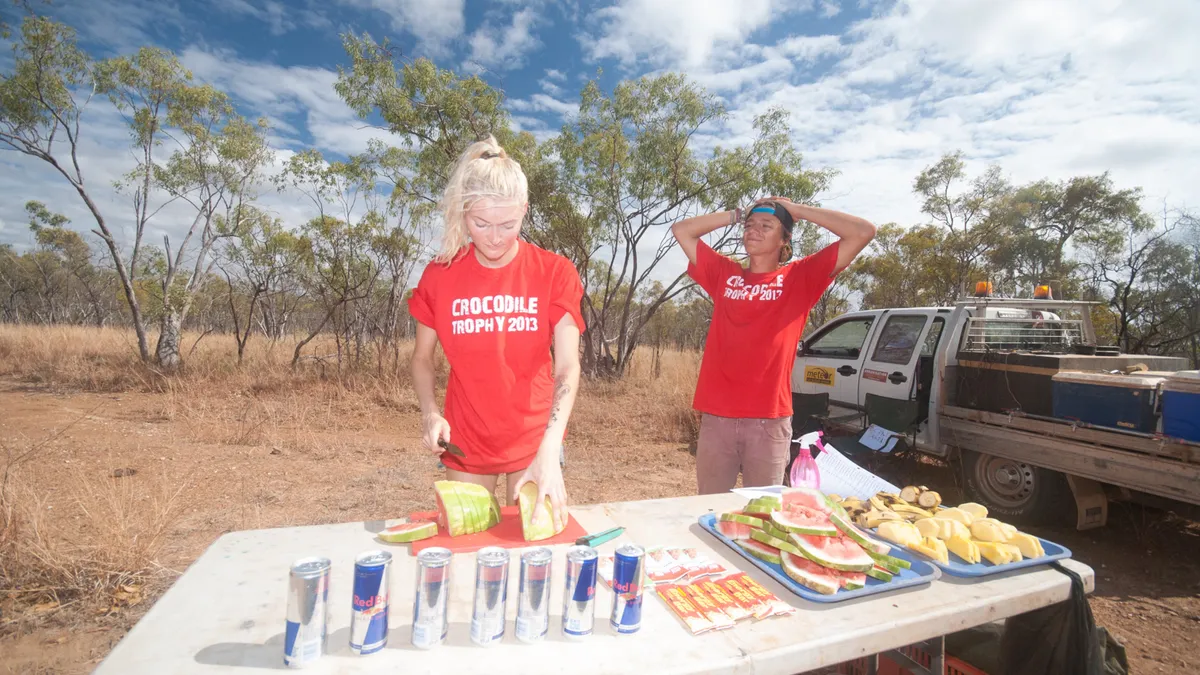
Most races will offer some supplies along the way, but the top guys will generally stick to their pre-planned energy food
“Don’t start eating two or three hours into the race – that’s just too late," Wallace continued. "You want to start in the first hour – 300 to 400 calories is an ideal every hour. That’s roughly half a bar, a gel and a bottle of hydration mix for me.”
Jason English’s energy plan is quite different to Wallace’s. While he does eat plain white bread sandwiches and other solid foods, he tends to use a gel every half hour.
“I use Shotz gels, which work really well for me," English revealed. "The key thing with gels is not to overdo it on the caffeine – I save those for the final hour or two of racing only.”
After the finish line
Once you’ve finished the day’s stage, it’s important to straight away start thinking about your recovery for the next day.
“A common mistake is being too social after a stage. Once you cross that line just get some food and liquids into you," advised Wallace. "Fruit and protein is a good one. A recovery (or protein) bar is another good option.”
As many riders finish the stages completely wrecked, digesting solid food can be a real chore – so recovery shakes or similar liquid meals can be a blessing.
Wallace backs this up, with the recommendation to first stick with simple sugars that are easy to digest and that go straight in, avoiding heavy and solid foods until after. “Oranges and watermelon are great as it’s hydration and sugar,” he said.
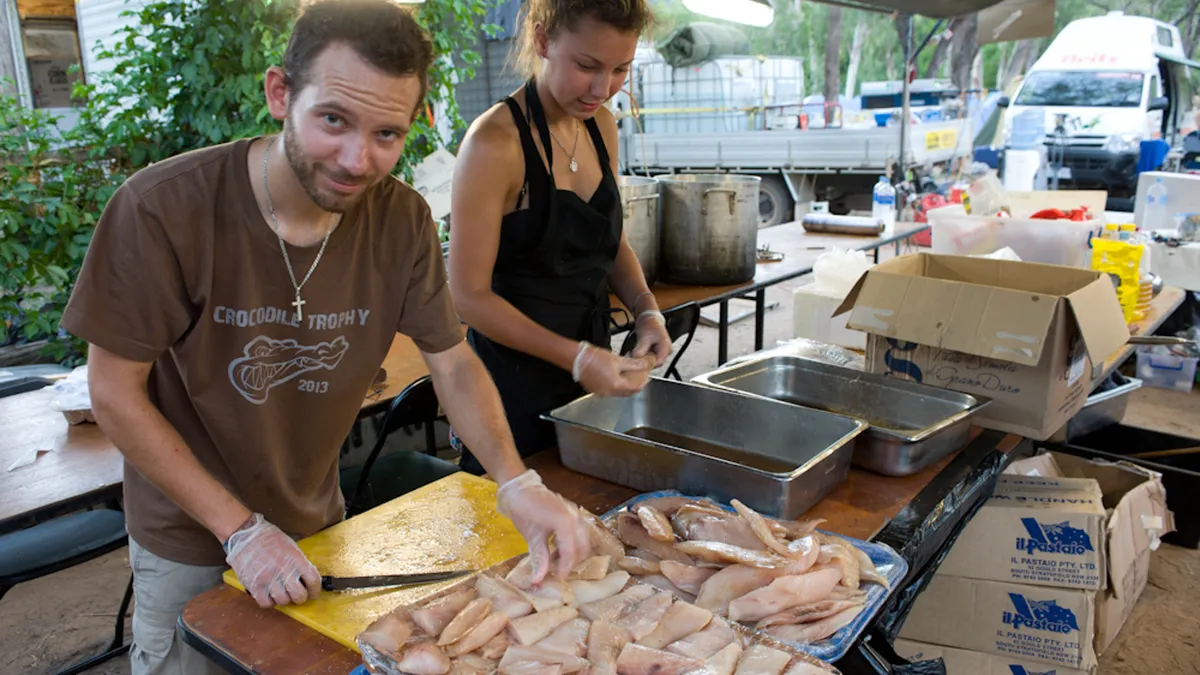
Keep the heavy and hot foods for after you've replenished your sugar levels
It’s important to not mix too many foods at once, because doing so can cause serious stomach issues. Wallace also advocates spacing out your hydration from your eating so as to avoid diluting the acid in your stomach, which, he told BikeRadar, can also lead to stomach issues.
“I like to get my fruits down, give it some time and then go for more solid, hot foods such as meat and pasta,” said Wallace.
English agrees: “The first thing I’d eat after the race is a gel or two; it’s a focus on hydration and glucose first. I’ll then eat protein and more solid foods afterward."
So what about the big question that's no doubt on many readers' lips: is beer a suitable recovery fuel with which to reward yourself after each stage?
“In theory there’s nothing against it," Wallace concluded. "It has some good stuff in it and if it helps you relax, why not? But it’s not a miracle cure – only have it if you know your body handles it well.”
In the last article of this series we’ll cover training preparation and other general tips for marathon events. BikeRadar recently visited Cairns and rode some of the trails that the 2014 Crocodile Trophy will go through, including the start at Smithfield, Atherton and the ending at Port Douglas, where the race concludes after nine days.
